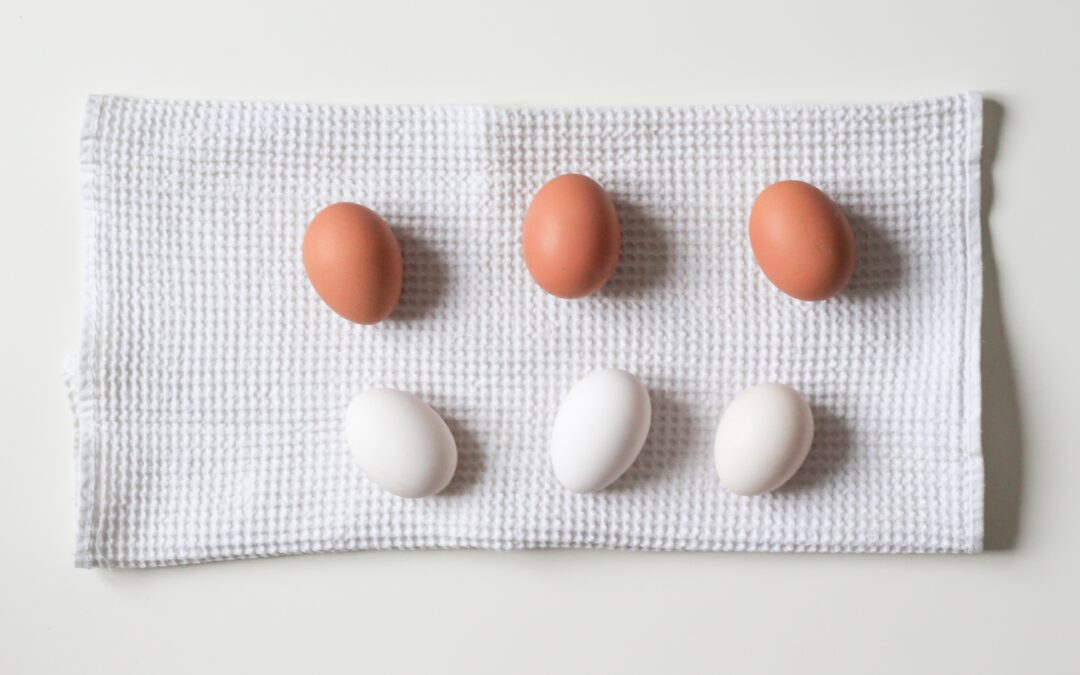Influence is a powerful force that often operates subtly in our daily lives. One intriguing aspect of influence is the contrast effect, which shapes our judgments and perceptions based on the presence of contrasting stimuli. This phenomenon can be observed in various contexts, from the sales strategies employed by savvy retailers to our personal interactions and decision-making processes. In this article, we delve into the intriguing world of the contrast effect, exploring its impact on our perceptions, judgments, and even our relationships.
To illustrate the contrast effect, let’s turn to a story recounted by Robert Cialdini in his book Influence. Sid and Harry, two brothers running a clothing store in 1930s America, employed a clever sales tactic. When customers admired themselves in the mirror while trying on suits, Sid would pretend to mishear the price called out by Harry, who led the tailoring department. By deliberately lowering the price, customers were enticed to make the purchase promptly, perceiving it as an incredible deal. This clever manipulation highlights how our judgments can be swayed by contrasting information.
The Power of the Contrast Effect
The contrast effect profoundly affects how we interpret our experiences and make decisions. It hinges on our natural tendency to judge things relative to what we’ve just encountered rather than by any intrinsic value. It’s a bias that can seriously affect everything from personal purchases to complex life decisions. In Cialdini’s example, Sid and Harry’s clothing store operation exploited this psychological quirk to an extraordinary degree. Sid, by falsely inflating the price of the suit, created a contrast that made the final price seem exceptionally low to the customer. The perceived deal wasn’t rooted in the actual value of the suit but in the perception of the price difference.
This simple yet powerful tactic reveals a core truth: we do not make judgments in isolation. Our perceptions are influenced by the context in which we encounter an object or experience. In Sid’s case, the customer wasn’t evaluating the suit in isolation—they were comparing it to the “inflated” price. This is the core of the contrast effect: we judge how something compares to what we’ve already experienced. In Sid’s store, the comparison is explicitly manipulated, but in everyday life, it happens without our conscious awareness.
The effect is so pervasive that it influences virtually all of our decisions. From how we choose a restaurant, assess a job offer, or even value our self-worth, the contrast effect acts as a silent force guiding our choices. It is especially powerful when exposed to a sequence of options or experiences that affect our emotional reactions. We find ourselves reacting more to the relative differences between choices rather than the absolute qualities of each. This leads us to make decisions that may seem rational on the surface but are often rooted in the biases induced by the contrast.
The Experiment with Water
The water experiment highlights the contrast effect in a more tangible and sensory-driven way. It demonstrates how our perception of something as basic as temperature is altered when we experience something extreme beforehand. Imagine dipping your right hand in a bucket of ice-cold water for a minute. Then, when you place both hands into lukewarm water, the right hand perceives it as far hotter than the left, even though the temperature of the water hasn’t changed. This perception shift results from contrast: the cold hand has a much lower baseline temperature, making the lukewarm water feel scalding.
This experiment is an excellent metaphor for how the contrast effect works in other areas of life. Just as our perception of temperature is relative, so is our perception of value, attractiveness, and emotional satisfaction. When we compare experiences, the difference in those experiences often dictates how we evaluate them rather than the absolute nature of the experience itself. It’s as if our minds constantly measure one experience against another rather than taking each on its merit.
In more practical terms, this can manifest in many areas. Take the shopping world: we may perceive an item as a great deal if it’s on sale for $30, but the original price of $50 influences this judgment. In reality, $30 could still be too much for the item, but the contrast with the original price gives it an unfair sense of value. Similarly, a meal at a restaurant might feel like a treat compared to a more expensive, fine dining experience, even if it falls short of the expected standards for its price. The experiment with the water is a reminder that our experiences are framed by what we’ve just encountered, and this framing can dramatically influence how we interpret subsequent events or choices.
The Illusion of the Bargain
The illusion of a bargain is one of the most insidious ways the contrast effect manifests. We all love a good deal and are hardwired to appreciate the sense of savings. But often, what we consider a bargain is a psychological trick. This is particularly true in environments that capitalize on consumer decision-making, such as retail or real estate markets. Take, for example, the scenario of buying a car. You may initially see a vehicle priced at $60,000, and then the salesman presents an upgrade for leather seats priced at $3,000. At first glance, $3,000 may seem expensive. But when compared to the $60,000 price tag of the car, that $3,000 feels like a reasonable investment. This is the essence of the contrast effect in action: we judge prices in relative terms.
This same principle extends across a broad spectrum of purchasing decisions. You walk into a high-end store, and the first item you see costs $500. It suddenly feels like a good deal when you’re presented with a slightly more affordable item at $250. Even though the $250 item is still quite expensive, it seems like a bargain compared to the original $500 price. In reality, both prices might be far higher than the item is worth, but the contrast makes the cheaper option feel like the “right” choice. It’s not that the lower price is objectively better; it’s simply that we are influenced by what has come before.
This is also why discounting works so well. If you see an item originally priced at $100, marked down to $70, its perceived value increases significantly, even if it was never worth $100 to begin with. It’s all about comparison. The contrast between the original price and the sale price makes the item feel like a “deal,” even though its true value may not be reflected in the discount.
The Cost of Irrational Choices
The contrast effect isn’t just confined to trivial decisions or purchases. It also affects how we value our time, money, and efforts. Take the example of walking ten minutes to save $10 on groceries versus saving $10 on a high-end suit. At face value, the logic suggests that the time commitment (ten minutes) and the amount saved ($10) should weigh the same in both scenarios. However, the contrast effect alters how we perceive the savings. Walking to save $10 on an everyday item like groceries seems reasonable because it feels like a good return on our time. However, saving the same amount on a luxury item, like a suit, feels less impactful because the relative size of the savings pales in comparison to the price of the suit.
This behavior exemplifies how the contrast effect leads us to make irrational choices. When confronted with a larger expense, even a tiny saving can feel inconsequential, while the same saving applied to a smaller expense seems more substantial. This is not a rational way of evaluating decisions. Ten minutes of walking to save $10 should be treated the same regardless of the cost of the item in question, but our brains process these savings in terms of their relative importance to the overall purchase. The contrast effect has a sneaky way of influencing us to make decisions based on perceived value rather than logic.
It’s also why consumers tend to overpay for things that are “on sale.” They don’t realize that the original price might have been artificially inflated to make the discount appear more significant. In the shopping world, this creates a cycle of irrational behavior: a discount is seen as a saving, even when the original price was inflated to make that saving seem more substantial.
How the Contrast Effect Can Shape Your Life
The contrast effect doesn’t just alter how we make purchases—it influences many aspects of our lives, from relationships to personal achievements. In relationships, for example, a person who has experienced a toxic or abusive situation may start to view a more average partner as extraordinary simply because the comparison makes the ordinary partner appear much more appealing. This is a stark reminder of how powerful relative judgments are.
In the realm of self-worth, we often compare ourselves to others, consciously or unconsciously. If surrounded by people who embody extreme ideals of success, beauty, or intelligence, we might start to feel inadequate by comparison. This is another way the contrast effect manifests in our personal lives. If you consistently compare your achievements, appearance, or success to others, you might fall victim to a distorted sense of self-worth shaped by relative comparisons.
In personal growth, the contrast effect can cause us to dismiss our progress, as we judge our development against someone else’s journey rather than measuring it by our own goals. Just as someone might feel “less successful” compared to a high-achieving friend, we may feel “less accomplished” simply because we are not comparing ourselves to our past selves or realistic standards. This perception is deeply affected by the external factors we measure ourselves against, which are often arbitrary and fleeting.
The Impact of Supermodels on Your Self-Perception
The world of beauty and media offers another striking example of the contrast effect’s influence on self-perception. Supermodels and media portrayals of beauty have set an unrealistic and unattainable standard for most people. The contrast effect here works to warp our sense of attractiveness. When constantly exposed to images of flawless models, our perception of what is beautiful becomes skewed. We begin to judge ourselves relative to the idealized beauty presented by society, and as a result, we may feel inadequate.
If you go out with a group of people who meet the stereotypical beauty standards, you may find that others perceive you as less attractive, even if you are objectively attractive. This is the contrast effect in action: you’re judged not by your intrinsic beauty but by how you compare to those around you. The same principle applies when we are constantly exposed to images of extreme wealth or success in the media; our achievements or possessions may seem less significant by comparison, even if they are impressive in their own right.
The contrast effect influences how we see beauty, success, and happiness. By constantly measuring ourselves against unattainable standards, we set ourselves up for disappointment and dissatisfaction. The contrast effect distorts our perception, making us believe that we are lacking when, in fact, we might be just fine the way we are.
Conclusion
The contrast effect is a powerful cognitive bias that influences our perceptions, judgments, and decision-making processes. Understanding its impact allows us to develop a heightened awareness of how external stimuli shape our thoughts and actions. Recognizing the contrast effect allows us to approach situations with a more critical and independent mindset, enabling us to make informed choices and navigate the complexities of a world filled with contrasting influences. So, leave your supermodel friends at home and embrace the clarity of perception that comes from recognizing the contrast effect.
This article belongs to The Art of Thinking Clearly Series based on Rolf Dobelli’s book.

